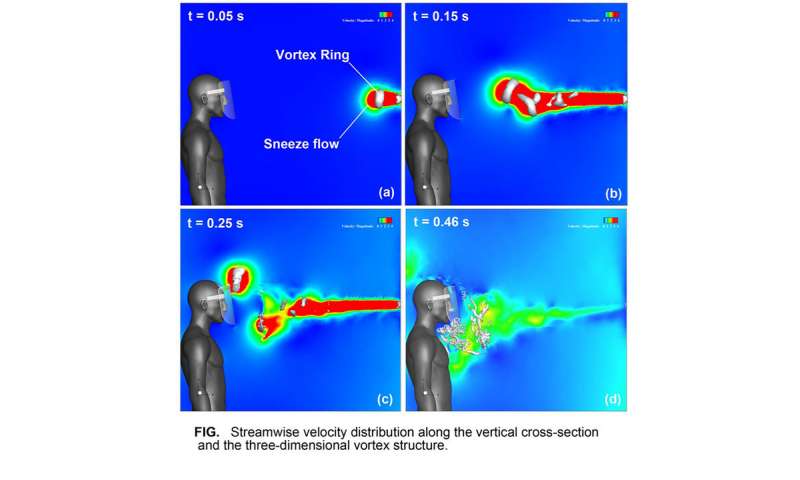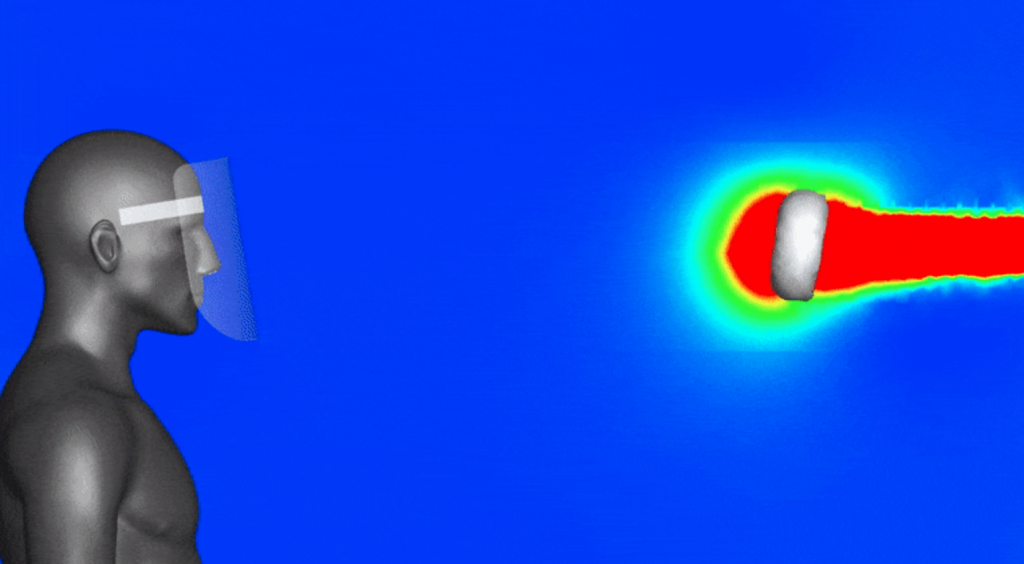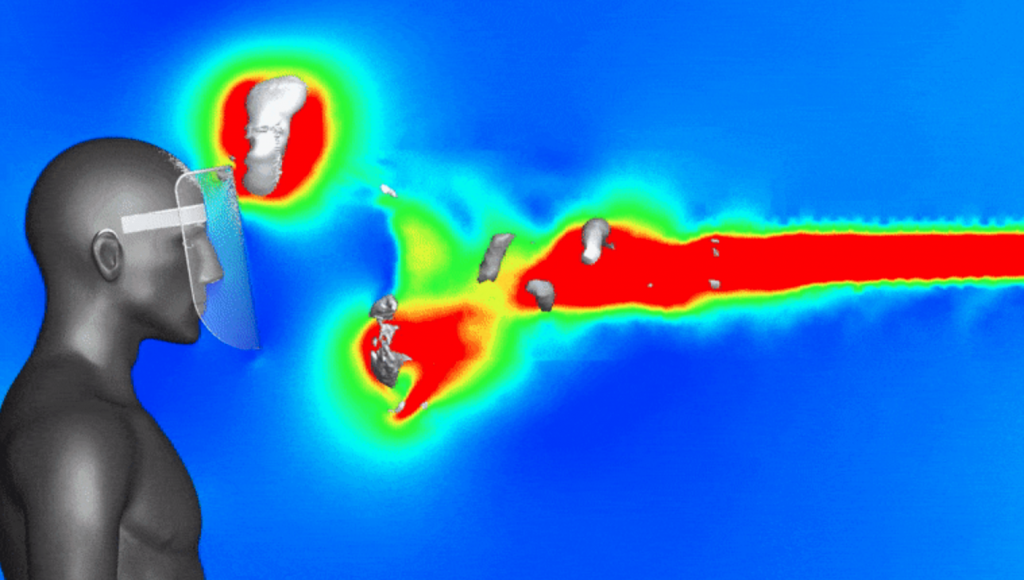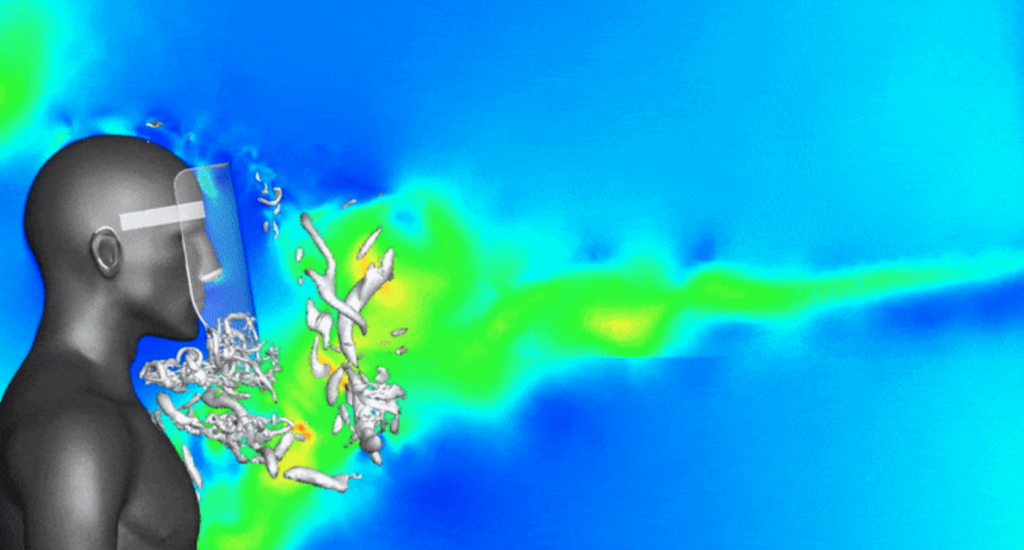
Do face shields provide enough protection to the wearers against COVID-19 if they don’t also wear a mask? Spoiler alert: no. But researchers at Fukuoka University in Japan are working to create face shields safe enough to be worn alone.
The researchers originally set out to explore whether surgical masks and face shields used as preventive measures are effective, as well as to determine if the stress of wearing a N95 surgical mask for long periods could be reduced.
In Physics of Fluids,, Fujio Akagi and colleagues describe their work to gain a better understanding of what happens to the airflow around a face shield when someone nearby sneezes. Sneezes are intriguing, because they produce a fluid phenomenon known as vortex rings.
“A vortex ring is a donut-shaped vortex that is generated by an instantaneous ejection of fluid from a circular orifice,” said Akagi. “This resembles bubble rings made by dolphins.”
These vortex rings can capture microscopic particles, which sneezing also generates. What happens when a face shield wearer is exposed to a sneeze from an infected person standing 1 meter (39.3 inches) in front of them?
“The vortex rings generated by the sneeze capture the microscopic droplets within the sneeze and transport them to the top and bottom edges of the face shield,” said Akagi, adding that droplets travel to the face shield wearer quickly—within 0.5 to 1 second after the start of the sneeze.



These pictures show what happens when a sneeze blasts a face shield. The color contours represent the magnitude of the velocity. Credit: Fujio Akagi, Isao Haraga, Shin-ichi Inage, and Kozaburo Akiyoshi
“If this arrival time is synchronized with inhalation, the shield wearer will inhale the droplets,” Akagi said.
The researchers made three findings everyone should know:
First, droplets of sneezes are transported not only by the high velocity airflow caused by sneezing, but also by the vortex rings generated by sneezing.
Second, microscopic droplets transported by these vortex rings can get inside the shield through its top and bottom edges.
Third, face shields alone are not highly effective to prevent COVID-19 infection.
By gaining a better understanding of face shield weaknesses, researchers believe the protection can be enhanced by reducing the flow getting inside the shield.
“We are currently developing and demonstrating several improved shields,” said Akagi. “We want to contribute to keeping people safe from infection, and believe that one day in the near future, medical workers will be able to prevent infection using only a face shield and a regular mask or, ideally, with only a face shield.”

